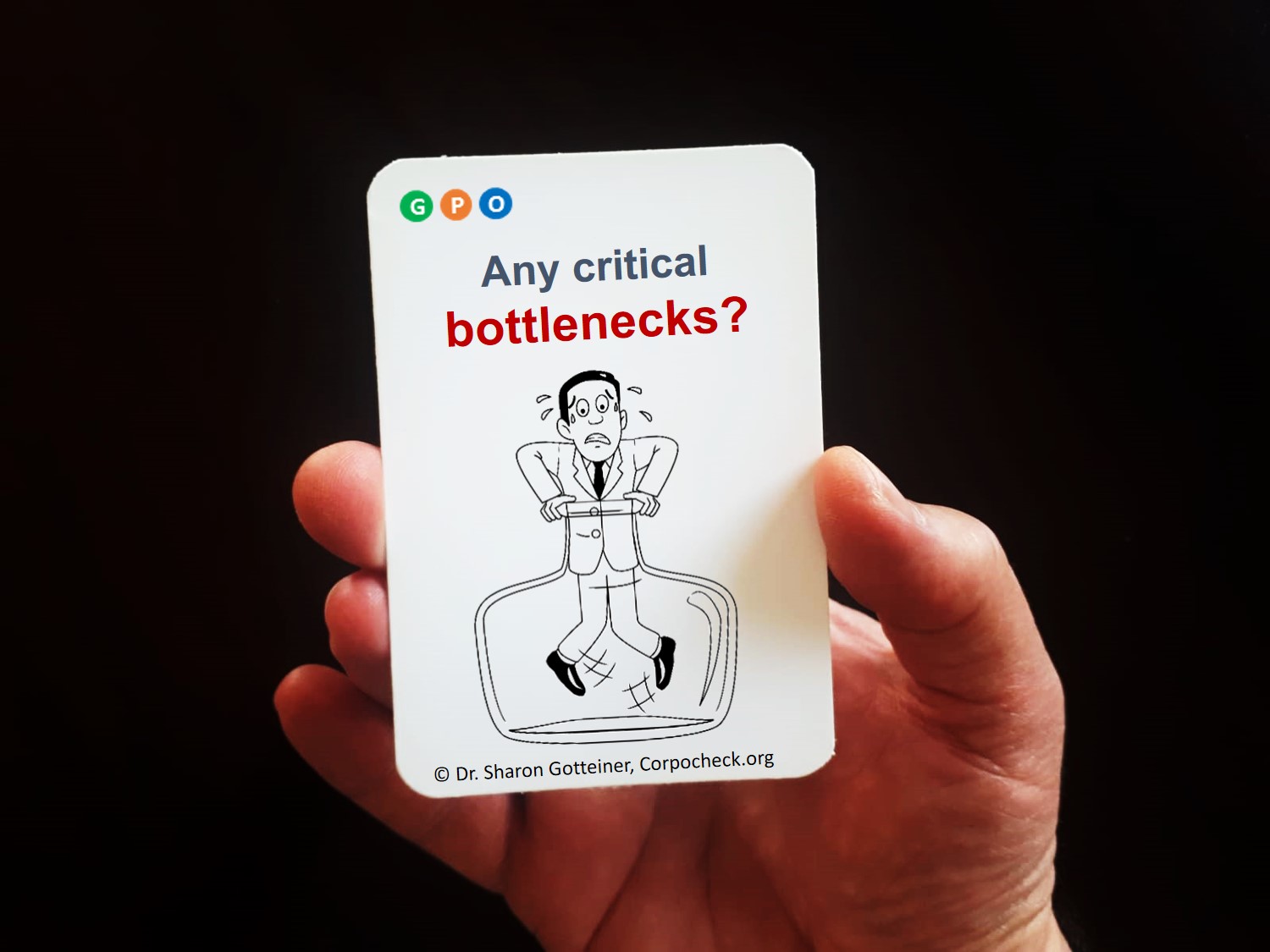| Corpocheck.org |
Take this challenge:
Are there any critical bottlenecks?
By Dr. Sharon GotteinerBottlenecks may provide great opportunities for increasing revenue and growth – if relieved. Can you identify such opportunities?

The kind of bottlenecks that we are looking for
Any system has its own bottlenecks, i.e. constraints that prevent you from doing better. For example:
- Understaffing down the process, that delays the delivery of earlier assignments.
- Insufficient production capacity, that extends our lead time.
- Shortages that prevent us from delivering on our side.
Most of us are not industrial engineers and yet, we can identify a bottleneck when we see one. However, not all bottlenecks affect our profitability and growth, or other critical operational objectives. This challenge encourages you to identify an effective bottleneck – of the kind that you may be able to relieve, and by doing so increase your profitability or growth. Will you take it up?
Let’s go on a bottleneck hunt!
You first need to identify a significant bottleneck. Here are three common types that you may be able to find:
- Short-term-driven: This type of bottleneck relates to occasional, short-term circumstances where demand exceeds the capacity. If related measurements and charts show periodical spikes, you may be suffering this kind of bottleneck.
- Queue-based: This type often relates to situations in which one operational function or more is waiting for the output of another one, as a routine (i.e. it’s not a short-term bottleneck). However, sales operations can also be listed under this category if, for example, salespersons are waiting for an order to be internally checked or approved.
- Capacity-based: Here, demand is being limited by current organizational capacity as routine. No internal function is waiting for another one to do its part. The organization is operating at maximum capacity, given current conditions. Examples are the number of rooms any given hotel has, or the number of airplanes any given airline possesses.
Below is a visualization of the above explanation:

If you see any short-term bottleneck, consider these questions:
- Can you describe that bottleneck using any measurement?
- Can you pinpoint the root cause of that bottleneck?
- How can you better schedule tasks before or during such peaks (e.g. training for higher employees’ mobility, overtime, outsourcing)?
- What values could you measure if you rescheduled tasks as you propose?
- What is the financial impact derived from such a change?
If you see any queue-based bottleneck, consider these:
- Which work often gets delayed?
- Can you describe that queue in numbers?
- What can be done to avoid that queue?
- How could revenues and profits improve if you addressed that bottleneck? Can you draw a direct link?
If you face any capacity-based bottleneck, consider these:
- What is preventing you from selling or producing more?
- What investment could you consider for tackling that bottleneck?
- Can you estimate the utilization rate of such an investment?
- What data is available or otherwise needed to support the ROI calculation for such an investment?
Let’s take it step by step
When you take up this challenge, try to address the relevant questions. That may help generate real value. At the same time, you may not have sufficient information to capture it all. Start with whatever inputs you can contribute, and take it further in collaboration with additional roles and departments as needed.
So… are there any bottlenecks that you can identify? Good luck!
© Dr. Sharon Gotteiner, Corpocheck.org. All Rights Reserved. This challenge is intended for individual use only. Please subscribe to receiving additional challenges, and sharing them across the organization.
This content made available herein may not be suitable for every business situation. You should seek third-party advice in all related matters. We make no representations or warranties with respect to the suitability of this content to the specific needs of any given organization. We will not be liable for any direct, or indirect damages, and any reliance you place on such content is therefore strictly at your own risk.